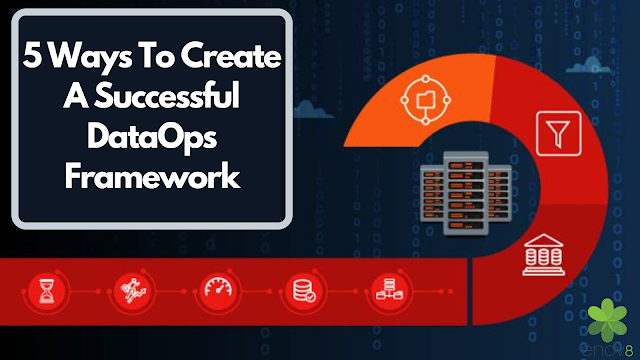DataOps is an evolving approach to managing data. What if you had a streamlined technique like DevOps for data processing and management?
Thankfully, there is! DataOps framework.
DataOps, short for “data operations”, is an automated, process-oriented methodology to improve the quality and reduce the end-to-end cycle time of data analytics. Analytics and data teams are increasingly using the DataOps framework to produce high-quality data faster.
This article will discuss 5 ways to create a successful DataOps Framework.
5 Ways To Create A Successful DataOps Framework
Embrace The Data Literacy Culture
Data-driven results give you a competitive advantage. But before you start leveraging data, you’ll need to understand what types of datasets already exist within your organisation and how they are processed and utilised. This process is known as an audit.
An audit enables you to determine an organisational benchmark of current data use and provides an opportunity to enhance data processing and utilisation through DataOps.
Understanding the process and bringing in innovation to improve data utilisation sets the cornerstone for developing a data literacy culture. Greater access to data and data processing training are the two fundamental pillars of data literacy.
Executive,
IT environment manager, release manager, developer and other relevant roles associated with SDLC needs to lead with data use as a fundamental principle.
Practice Top-Down Approach To Drive Data Culture Acceptance
The backbones of DataOps involve people, processes, and technology. Since the DataOps approach itself focuses on a culture change, the key people in your enterprise needs to charter the idea of data literacy and enterprise data integration for greater acceptance.
Major stakeholders, including data analyst leads, data scientists, CDOs, CSOs, CEOs, champion data-driven culture.
Data Democratisation
Limited and no data access is one of the greatest roadblocks to adopting innovation and technologies that can drastically transform your company’s decision-making capabilities. AI-based processes require continuous training with new datasets for enhanced insights having relevance with the evolving real-world situations.
Data Democratisation while complying with security and regulatory frameworks through data fabrication can be pivotal in implementing DataOps.
Wondering what the Data Fabrication definition is?
Data fabrication can be defined as synthetic data generation for creating production replicated test data. Want to know more?
Click hereIntroducing Automation Whenever Possible But With Caution
Data processing involves intricate workflows and components. The accurate automation application can save considerable time on repetitive resource-intensive tasks in the data pipeline.
However, automating unnecessary processes can lead to costly expenses and reduce productivity. Therefore understand the processes that truly require automation and automate data processes with caution.
Establish Communication and Collaboration
DataOps aims to eliminate the traditional siloed data culture. It emphasises open channels of communication and active collaboration.
Within the boundaries of data security and governance policies, IT, data engineers, operations teams, and other relevant teams should actively collaborate on data assets and insights.
DataOps treats datasets as distributed and democratised property and breaks downs organisational boundaries.
Endnote
Following the correct DataOps framework is the best way to improve your data processes. These guidelines are the simplest way to optimise your DataOps approach and implementation. Hire a renowned professional service and enjoy the perks of DataOps culture.




Comments
Post a Comment